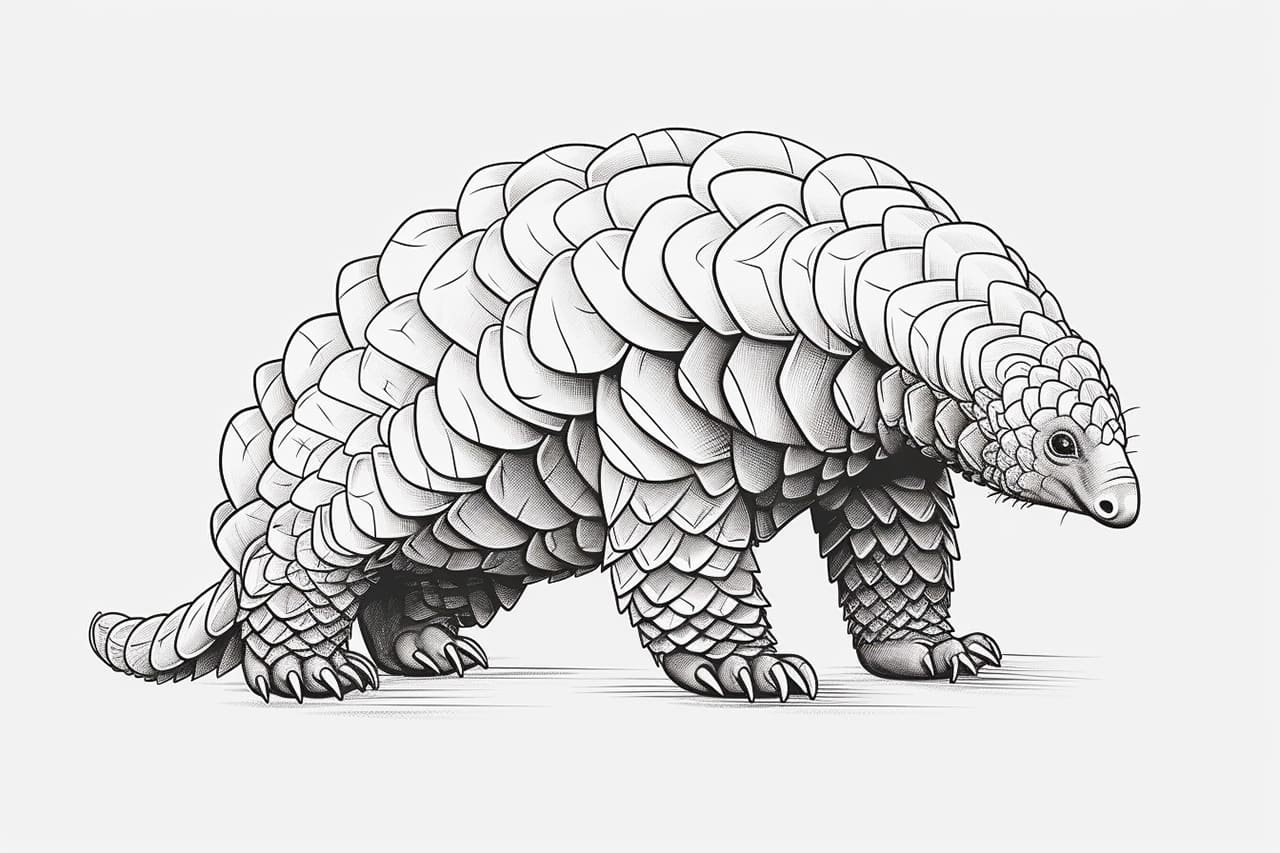Welcome to this step-by-step guide on how to draw a pangolin! Pangolins are fascinating creatures known for their unique appearance and scaly body. In this tutorial, we will break down the process of drawing a pangolin into easy-to-follow steps. Whether you are a beginner or an experienced artist, this guide will help you capture the essence of these magnificent animals on paper. So, let’s get started!
Materials Required
Before we begin, gather the following materials:
Having these materials ready will ensure a smooth drawing process. Now, let’s dive into the steps of drawing a pangolin!
Step 1: Start with Basic Shapes
Begin by lightly sketching the basic shapes that form the body of the pangolin. Start with an oval shape for the body and a smaller oval for the head. Connect the two with a curved line to represent the neck. Next, add a circle for the eye and a small triangular shape for the nose. These basic shapes will serve as a framework for the pangolin’s body structure.
Step 2: Outline the Body and Tail
Using the basic shapes as a guide, start outlining the body and tail of the pangolin. Pay attention to the curves and contours of the animal’s body, as well as the tapering shape of the tail. Take your time while drawing the outline, focusing on capturing the pangolin’s unique features.
Step 3: Add the Legs and Claws
Next, draw the legs of the pangolin. Pangolins have four legs, each with long claws used for digging and climbing. Sketch the front and back legs, making sure to emphasize the strong claws. Take note of the proportions and angles of the legs to ensure a realistic representation of the pangolin’s stance.
Step 4: Detail the Face and Ears
Move on to adding details to the pangolin’s face and ears. Refine the shape of the eye, giving it a bright and alert look. Draw the ears as small curved lines on either side of the head. These details will bring life to the pangolin’s face and enhance its overall expression.
Step 5: Draw the Scales
Now comes the exciting part – drawing the pangolin’s scales! Pangolins have hard, overlapping scales that protect their bodies. Take your pen and carefully draw individual scales across the pangolin’s back, tail, and legs. Pay attention to the direction and pattern of the scales, which typically run from the head to the tail. This intricate texture is one of the defining features of the pangolin, so take your time and enjoy the process.
Step 6: Refine and Add Details
Once you have completed the scale pattern, go over your initial pencil lines with the pen, adding more definition and intricacy to your drawing. Erase any remaining pencil marks, leaving only the clean, bold lines of the pangolin’s form. Take this opportunity to refine the shape and proportions of the pangolin, adding any additional details you might have missed.
Step 7: Optional – Color Your Drawing
If you wish to add color to your pangolin drawing, now is the time. Refer to reference images or use your creativity to choose the appropriate colors for the pangolin’s scales and features. Colored pencils or markers work well for this purpose. Take care to blend and layer the colors to achieve a realistic and vibrant appearance.
Conclusion
Congratulations! You have successfully learned how to draw a pangolin. With the step-by-step instructions provided in this guide, you can now create your own beautiful pangolin artwork. Remember to practice regularly and experiment with different techniques to enhance your drawing skills. Whether you are drawing for fun or as a serious artist, the ability to capture the beauty of these unique creatures will surely impress others. Happy drawing!
Fun Facts About Pangolins
- Pangolins are the only mammals wholly covered in scales. These scales are made of keratin, the same protein that makes up human hair and nails.
- Pangolins are often referred to as “scaly anteaters” due to their diet consisting mainly of ants and termites. They have long, sticky tongues that can be longer than their body length to help them catch insects.
- There are eight species of pangolins, four in Africa and four in Asia. All eight species are currently threatened with extinction due to illegal trafficking for their scales and meat.
- Pangolins are solitary and nocturnal animals, spending most of their time alone and coming out to forage for food at night.
- When threatened, pangolins curl up into a tight ball, using their tough scales as armor to protect themselves from predators.
- Pangolins have poor eyesight but an excellent sense of smell, which helps them locate their prey underground.
- Pangolins are excellent climbers and can use their strong, prehensile tails to hang from tree branches while feeding.
- Pangolins have a unique way of walking, using their front claws to dig into the ground and push themselves forward, similar to a front-wheel-drive vehicle.
- Pangolins are considered to be one of the most trafficked mammals in the world, primarily due to the high demand for their scales in traditional Chinese medicine.
- Pangolins play a crucial role in their ecosystems by controlling insect populations, particularly ants and termites, which can be harmful to agriculture if left unchecked.
Suggestions for Scenes and Settings for Pangolin Drawings
Certainly! Here are some specific suggestions for scenes and settings for drawings of pangolins:
- Pangolin in its natural habitat: Draw a pangolin in a lush tropical forest, surrounded by tall trees, vines, and colorful flowers.
- Pangolin in a burrow: Illustrate a pangolin curled up inside its burrow, with roots and soil around it, creating a cozy and safe environment.
- Pangolin at a watering hole: Sketch a pangolin drinking from a watering hole, with other animals like elephants and birds in the background.
- Pangolin climbing a tree: Show a pangolin using its strong claws to climb a tree trunk, with leaves and branches extending in all directions.
- Pangolin in a bamboo forest: Capture a pangolin navigating through a dense bamboo forest, with sunlight filtering through the tall stalks.
- Pangolin at dusk: Create a scene of a pangolin emerging from its burrow at dusk, with the sky painted in shades of orange and purple.
- Pangolin in a savanna: Draw a pangolin wandering through a grassy savanna, with acacia trees and distant mountains in the background.
- Pangolin in a desert: Illustrate a pangolin in a sandy desert landscape, with cacti and sparse vegetation dotting the arid terrain.
- Pangolin in a rainforest canopy: Show a pangolin high up in the canopy of a rainforest, with colorful birds and monkeys swinging from branch to branch.
- Pangolin in a cityscape: Imagine a pangolin exploring a bustling city, with skyscrapers, cars, and pedestrians in the background, highlighting the contrast between urban development and wildlife.









